AMD Zen 3 Ryzen Deep Dive Review: 5950X, 5900X, 5800X and 5600X Tested
by Dr. Ian Cutress on November 5, 2020 9:01 AM ESTGaming Tests: Final Fantasy XV
Upon arriving to PC, Final Fantasy XV: Windows Edition was given a graphical overhaul as it was ported over from console. As a fantasy RPG with a long history, the fruits of Square-Enix’s successful partnership with NVIDIA are on display. The game uses the internal Luminous Engine, and as with other Final Fantasy games, pushes the imagination of what we can do with the hardware underneath us. To that end, FFXV was one of the first games to promote the use of ‘video game landscape photography’, due in part to the extensive detail even at long range but also with the integration of NVIDIA’s Ansel software, that allowed for super-resolution imagery and post-processing effects to be applied.
In preparation for the launch of the game, Square Enix opted to release a standalone benchmark. Using the Final Fantasy XV standalone benchmark gives us a lengthy standardized sequence to record, although it should be noted that its heavy use of NVIDIA technology means that the Maximum setting has problems - it renders items off screen. To get around this, we use the standard preset which does not have these issues. We use the following settings:
- 720p Standard, 1080p Standard, 4K Standard, 8K Standard
For automation, the title accepts command line inputs for both resolution and settings, and then auto-quits when finished. As with the other benchmarks, we do as many runs until 10 minutes per resolution/setting combination has passed, and then take averages. Realistically, because of the length of this test, this equates to two runs per setting.
| AnandTech | Low Resolution Low Quality |
Medium Resolution Low Quality |
High Resolution Low Quality |
Medium Resolution Max Quality |
| Average FPS | 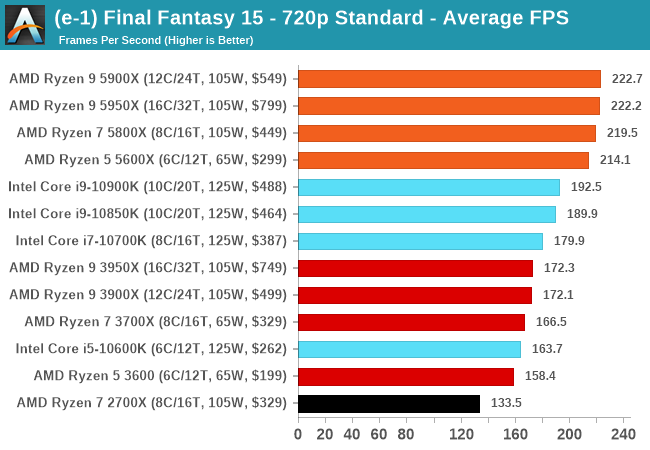 |
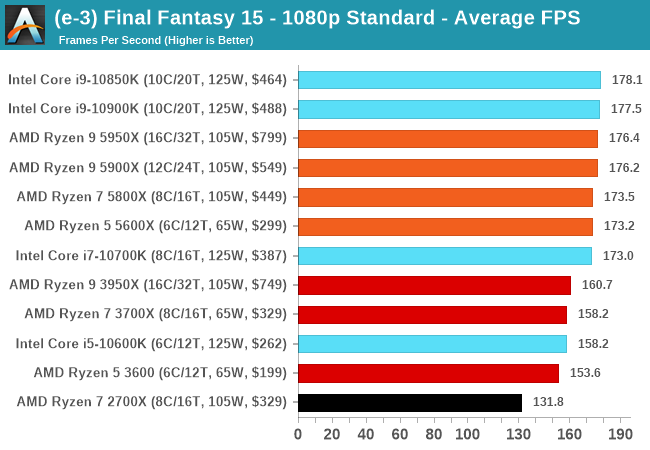 |
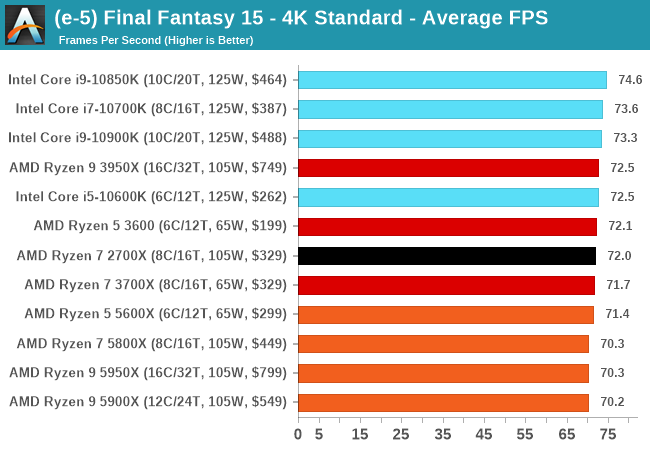 |
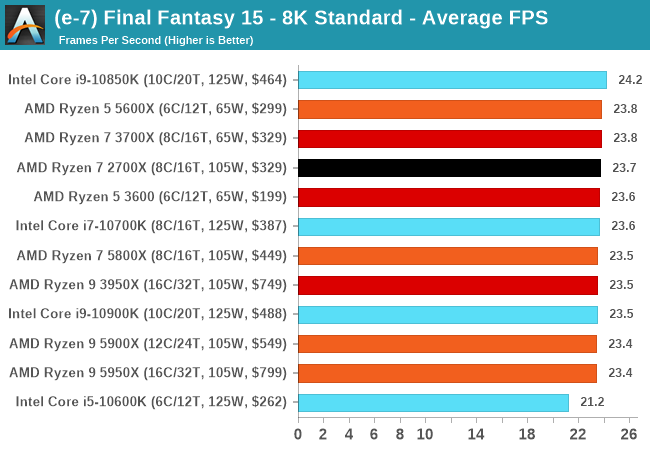 |
| 95th Percentile | 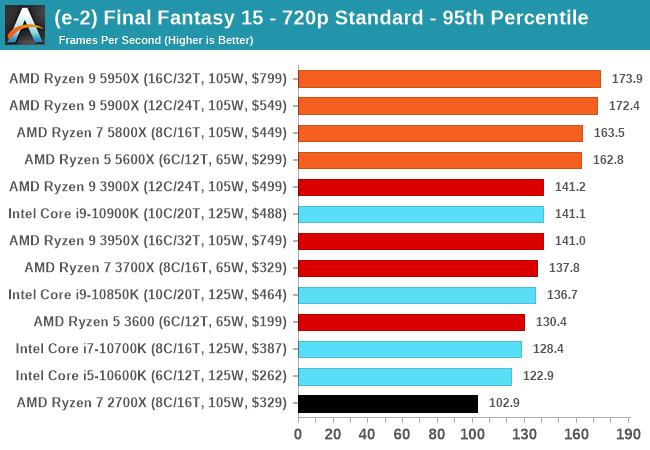 |
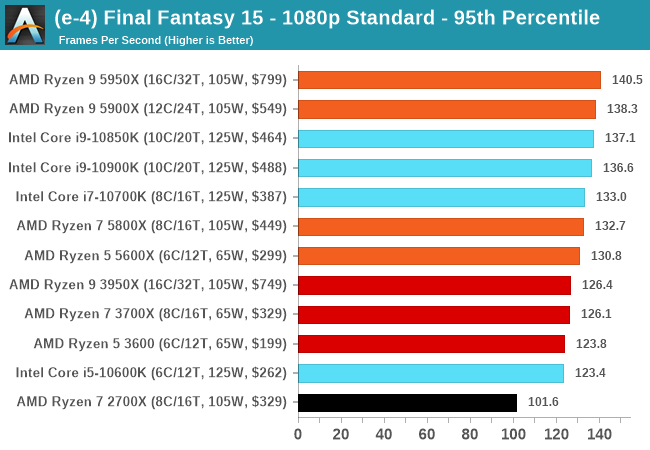 |
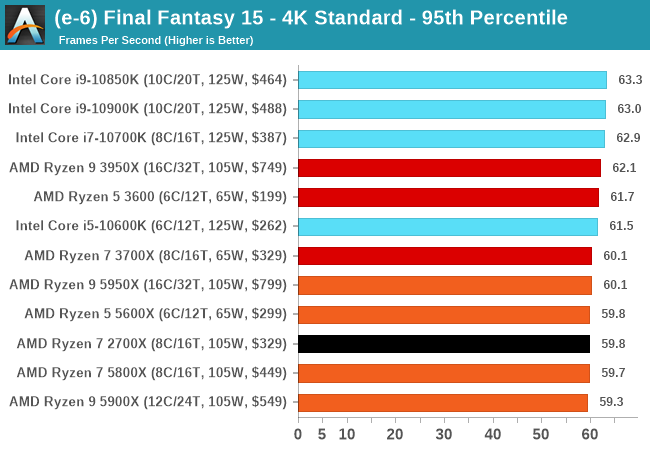 |
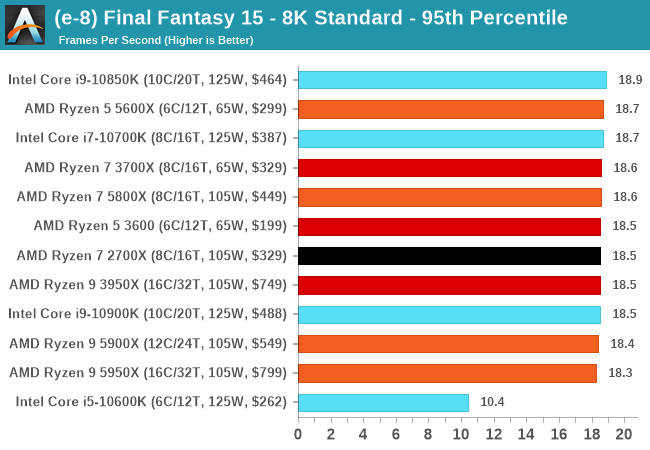 |
All of our benchmark results can also be found in our benchmark engine, Bench.


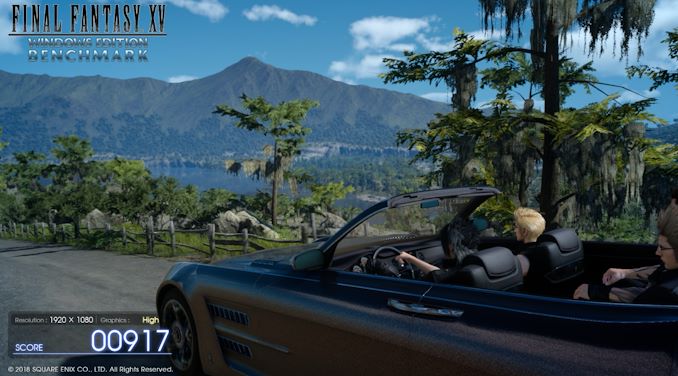









339 Comments
View All Comments
Badelhas - Friday, November 6, 2020 - link
I totally agree. I've upgraded from the last true overclocking champion from Intel (i5 2500k @4.8ghz from 8 years ago) to the 3600, it was finally worth it but going from 200 to 300 euros is a bit to much of an increase in price, in my humble opinionSpunjji - Sunday, November 8, 2020 - link
They're not really comparable, though. I'm weirded out by how many people are comparing the 3600 to the 5600X. The X is a bit of a giveaway.Kallan007 - Saturday, November 7, 2020 - link
I just buy new and sell off the old. But if you want a price break then just wait.Spunjji - Sunday, November 8, 2020 - link
I doubt it will. They'll sell every one they can make, and if not, there's no reason they can't begin to lower prices as supply begins to exceed demand.Threska - Monday, November 16, 2020 - link
Socket longevity is the important thing here for anyone playing the value game. You may not buy the latest and greatest NOW, but the future allows for it without starting completely over.UNCjigga - Thursday, November 5, 2020 - link
I suppose the only thing missing is a chipset/IO package with USB 4 support? Not a big deal for desktops--but I hope they have that figured out by the time Zen 3 is ready for mobile parts.Spunjji - Sunday, November 8, 2020 - link
That would be nice to see. I have a suspicion we won't see it until the new socket arrives on desktop, but would be good to get it with Cezanne on mobile.Machinus - Thursday, November 5, 2020 - link
Looks like a great set of chips for anyone who gets one mailed to them directly from AMD.Good luck buying one in a store.
charlesg - Thursday, November 5, 2020 - link
I have to say I'm disappointed in the availability of the 5900 and 5950. I expected better.lmcd - Thursday, November 5, 2020 - link
Yea honestly isn't this the whole point of the chiplet model? Or is the IO die different for the 2-chiplet models? I assume it's not packaging constraints because that makes no sense.